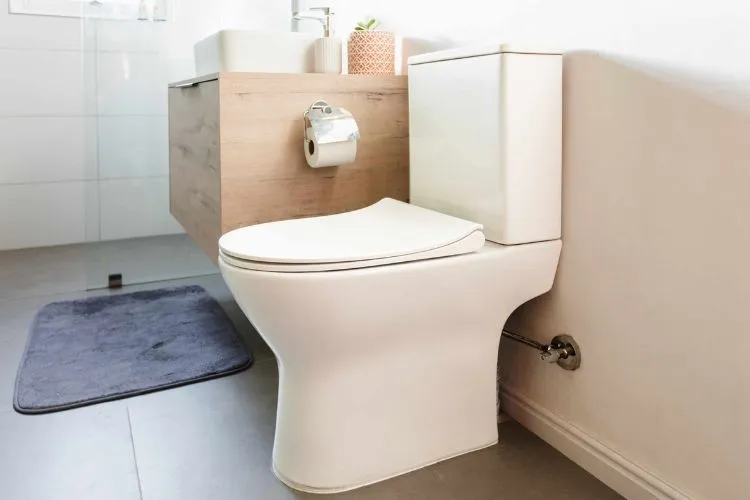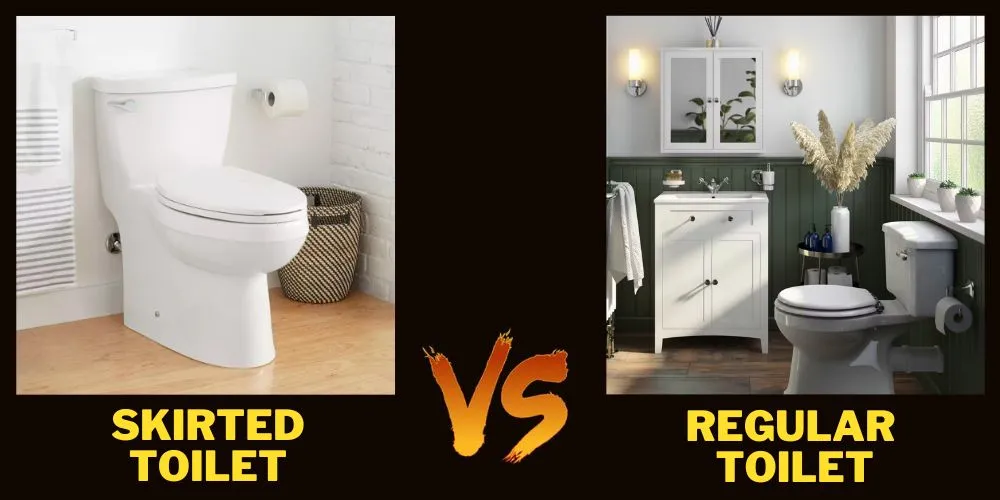The marvel of indoor plumbing has evolved enormously over the centuries, sprouting a myriad of intricate components.
One such critical, often overlooked piece is the toilet tank. But, are toilet tanks universal?
Well, over time, wear and tear cause these tanks to need replacement, leading to this crucial question.
Replacing or maintaining a toilet tank is more than just simple mechanics. It revolves around understanding the art of compatibility and recognizing the significance of the right fit. Let’s delve into this important topic.

Are Toilet Tanks Universal? An Honest Case Study
The quick answer is no, all toilet tanks are not universal. The term ‘universal’ in the context of toilet tanks does not mean any tank fits any bowl. Instead, it implies that certain elements or components might be compatible across different models.
The compatibility of toilet tanks depends primarily on three factors – the size, mounting options, and the design of the toilet bowl. These factors vary significantly among different brands and models, meaning a specific tank might not work properly if it’s not a perfect match with your particular toilet bowl.
So, while some components may fit a variety of toilet tanks, the tanks themselves are not universally interchangeable. Always check the measurements, brand specificity, and compatibility before embarking on a replacement or repair journey.
How to Determine if a Toilet Tank is Universal

To determine if a toilet tank is “universal,” you need to:
- Measure the dimensions of your existing toilet tank—height, width, and depth.
- Note the bolt pattern—the distance between the bolts that attach the tank to the bowl, as this must match.
- Check for the rough-in measurement, which is the distance from the wall to the center of the toilet flange bolts on the base.
- Look for identified “universal” models that are designed to fit multiple types of bowls with the same footprint.
No tank is truly universal due to variations in design and measurements. Therefore, consult with manufacturers or professionals and compare your details with replacement tank specifications for compatibility.
Toilet Tank Basics
Like every technology, the realm of toilet tanks isn’t homogeneous and consists of varied types – gravity-fed, pressure-assisted, and dual-flush being prominent ones. Each variety offers unique perks, influencing the overall functioning of your toilet. Demonstrate an understanding of these types and you’re halfway there.
The gravity-fed type employs the laws of physics, specifically gravity, to initiate the flushing action. On the other hand, the pressure-assisted toilet tanks use compressed air to forcefully drive water into the bowl for a heavy-duty flush. Last but not least, the dual-flush offers two flushing modes, one for liquid and the other for solid waste, aiding in water conservation.
Each tank type houses numerous components that make the toilet tank a mini powerhouse of practical engineering. For instance, the fill valve refills the tank after each flush, while the flush valve releases water from the tank to the bowl when activated. Compatibility extends beyond the tank itself to these operational components.
Toilet Tank Compatibility
When it comes to toilet tank compatibility, ‘universal’ takes on a unique connotation. It doesn’t mean any toilet tank can fit any bowl, but explains that certain elements or components might fit across different toilet tank models.
Compatibility hinges on three pivotal factors— size, mounting options, and toilet bowl design. A mismatch in size can lead to improper installation and performance problems, while inappropriate mounting can result in leaks and instability. Additionally, the design of the toilet bowl plays a vital role in determining the tank’s fit and operation.
The Pros and Cons of Universal Toilet Tanks
Universal toilet tanks arrive with their own set of boons and banes. A significant advantage includes the convenience of locating replacement parts and potentially lower costs due to high availability.
On the flip side, there is the possibility of running into performance issues since one-size-fits-all components may not optimally match a specific toilet’s requirements. Also, such universal options limit customization, barring you from tailoring your toilet system to suit your specific needs and aesthetics.
Professional Tips on Choosing the Right Tank
When it comes to selecting the right tank, compatibility, installation, and upgrades are pivotal considerations. Always ensure that the new tank aligns perfectly with your existing bowl, thwarting any leaks or operational issues. While installing, follow meticulous instructions or resort to professional help for hassle-free setting up.
If you’re mulling over an upgrade, consider toilet tanks which come with advanced features, such as dual-flush mechanisms for conservation, high-efficiency flushing to save water, and insulated tanks to prevent condensation.
Frequently Asked Questions (FAQs)
Can toilet tanks and bowls be interchanged across brands?
Though some components may be compatible, toilet tanks and bowls are typically not universally interchangeable across all brands and models. Always check measurement and brand-specific specifications before replacement.
How do you replace a toilet tank?
Replacement involves removing the old tank, fitting new bolts, washers, and nuts, mounting the tank onto the bowl, and connecting the water supply. Always endeavor for precision in this process.
What are typical compatibility issues with toilet tanks?
Incompatibility issues often arise due to size mismatches, incorrect mounting, and differing bowl and tank designs. Consulting a professional or a detailed guide may help forestall these issues.
Conclusion:
Understanding the universality of toilet tanks serves as an important tool when it comes to household maintenance or renovation. It’s a complex dance of compatibility and precise measurements, an intricate world that extends beyond a single definition of ‘universal’.
Knowledge of the different types, key compatibility factors, pros and cons, and professional advice equips you with the necessary arsenal to make informed decisions about your bathroom hardware. Never underestimate the power of the right fit. After all, in the world of plumbing, size really does matter!


